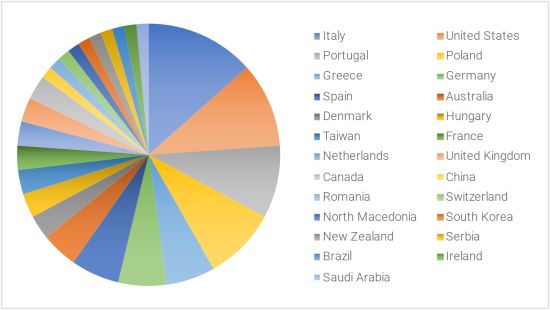Search Articles
Journal:
all
Total
—
86 articles
Article 29 Jan 2024
Manuel Rodeiro
Environmentalists have long claimed it is unjust for the state to prioritize economic interests over environmental ones by sacrificing ecosystem integrity and functioning to unsustainably expand the economy. Recently, mainstream environmentalists have moved to a more
Environmentalists have long claimed it is unjust for the state to prioritize economic interests over environmental ones by sacrificing ecosystem integrity and functioning to unsustainably expand the economy. Recently, mainstream environmentalists have moved to a more conciliatory approach highlighting the common ground between environmental and economic goals. They today claim processes of economic growth and development can be made just if they become green. This paper explores the question: should states pursue “green growth”? Although some critics claim green growth is impossible, I maintain it is. I theorize three conditions that must be met for an instance of growth to be truly considered green. That a development project is green, however, does not automatically ensure it is just. Justice considerations remain in adjudicating the competing interests of different groups of stakeholders. I then examine four reasonable approaches to resolving controversies over the pursuit of green growth: cost-benefit analysis, sufficientarianism, democracy, and pluralism. I conclude a liberal pluralist form of decision-making is best for ensuring fairness.
or
Access Full Article
This article is part of the Special Issue Green Economic Growth and Energy Consumption.
Highlights of Sustainability
Volume 3 (2024), Issue 1, pp. 33–45
Volume 3 (2024), Issue 1, pp. 33–45
2786 Views812 Downloads2 Citations
Article 5 Jan 2024
Athanasios G. Giannopoulos and Tatiana P. Moschovou
Highlights of Sustainability
Volume 3 (2024), Issue 1, pp. 16–32
Volume 3 (2024), Issue 1, pp. 16–32
2730 Views869 Downloads
Article 28 Dec 2023
Majbah Uddin, Nathan N. Huynh and Fahim Ahmed
Highlights of Sustainability
Volume 3 (2024), Issue 1, pp. 1–15
Volume 3 (2024), Issue 1, pp. 1–15
2918 Views743 Downloads2 Citations
Editorial 21 Dec 2023
Highlights of Sustainability Editorial Office
Highlights of Sustainability
Volume 2 (2023), Issue 4, pp. 303–304
Volume 2 (2023), Issue 4, pp. 303–304
2270 Views396 Downloads
Article 20 Dec 2023
Mouna Samaali, El-Hassane Aglzim, Xavier Dessertenne and Patrick Dubreuille
This article is part of the Special Issue Feature Papers to the Inaugural Volume of Highlights of Vehicles.
Highlights of Vehicles
Volume 1 (2023), Issue 2, pp. 68–85
Volume 1 (2023), Issue 2, pp. 68–85
2809 Views894 Downloads
Article 16 Nov 2023
Mahdi Mahmoudzadeh
This article is part of the Special Issue Capturing the Sustainable Impact of Early-Stage Business Models.
Highlights of Sustainability
Volume 2 (2023), Issue 4, pp. 283–302
Volume 2 (2023), Issue 4, pp. 283–302
2736 Views1173 Downloads
Article 15 Nov 2023
Irina Di Ruocco
This article is part of the Special Issue Capturing the Sustainable Impact of Early-Stage Business Models.
Highlights of Sustainability
Volume 2 (2023), Issue 4, pp. 259–282
Volume 2 (2023), Issue 4, pp. 259–282
3161 Views1164 Downloads1 Citations
Article 11 Nov 2023
Sevasti Malisiova and Stella Kostopoulou
Highlights of Sustainability
Volume 2 (2023), Issue 4, pp. 241–258
Volume 2 (2023), Issue 4, pp. 241–258
3695 Views999 Downloads1 Citations
Article 2 Nov 2023
Constanze Trautwein
This article is part of the Special Issue Capturing the Sustainable Impact of Early-Stage Business Models.
Highlights of Sustainability
Volume 2 (2023), Issue 4, pp. 224–240
Volume 2 (2023), Issue 4, pp. 224–240
3050 Views1242 Downloads
Article 6 Oct 2023
Felice Diekel, Vanessa Bach and Matthias Finkbeiner
This article is part of the Special Issue Capturing the Sustainable Impact of Early-Stage Business Models.
Highlights of Sustainability
Volume 2 (2023), Issue 4, pp. 207–223
Volume 2 (2023), Issue 4, pp. 207–223
5908 Views1839 Downloads2 Citations
